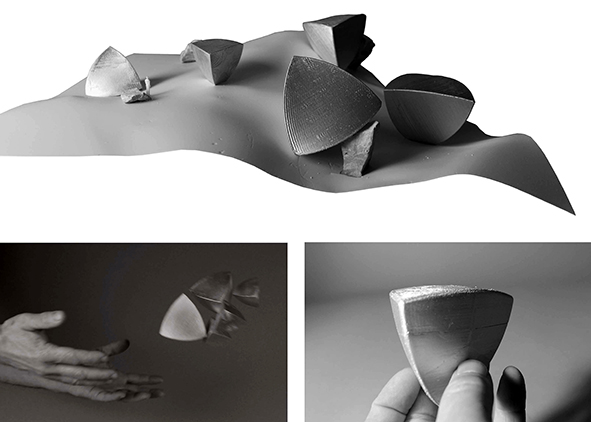Sustainable Winter-Tourism: the Project Snow-Cloud
DOI:
https://doi.org/10.19229/2464-9309/2262017Keywords:
self-formation, active bending, reduction of resources, sustainable winter-tourism, cloud for fresh snowAbstract
This article describes an experimental and multidisciplinary project with the goal to provide an ecological alternative to the existing winter tourism in alpine regions. The project emerged from the fusion of new snowmaking technology, based on the principle of natural snowflake evolution and the spatial conception of wooden Cloud structures, which are placed in the local environments in a sense of functional land-art.
Downloads
Article Metrics Graph
References
Enzenhofer, U., Bacher, M., Sokratov, S. and Reiweger, I. (2016), Producing nature like snow in a supercooled cloud for laboratory experiments, University of Natural Resources and Life Science, Vienna, Conference Paper ISSW October 2016, Colorado.
Klasz, W. (2016), “Costruire flessibile”, in Wittfrida, M. (ed.), Bio‐Architettura, pp. 32-39.
Klasz, W. (2017), “Self-Formed Micro Architecture for Sustainable Habitations”, in International Journal for Housing Science, Florida, USA, pp. 49-57.
Klasz, W. (2017), Inbetween, Auckland, New Zealand. [Online] Available at: unitec.ac.nz/epress/ [Accessed 7 October 2017].
Klasz, W., Grasser, A., Flach, M. and Sevela, P. (2016), “Wooden Membrane with integrated flexible PV-foil”, in Proceedings of the 11th Conference on Advanced Building Skins, October 10-11, Bern, pp. 68-76.
Lienhard, J., Alpermann, H., Gengnagel, C. and Knippers, J. (2013), Active Bending – A Review on Structures where Bending is used as a Self-Formation Process, Istituto per le strutture edilizie e il design strutturale, Università di Stoccarda.

Downloads
Published
How to Cite
Issue
Section
License
This Journal is published under Creative Commons Attribution Licence 4.0 (CC-BY).
License scheme | Legal code
This License allows anyone to:
Share: copy and redistribute the material in any medium or format.
Adapt: remix, transform, and build upon the material for any purpose, even commercially.
Under the following terms
Attribution: Users must give appropriate credit, provide a link to the license, and indicate if changes were made; users may do so in any reasonable manner, but not in any way that suggests the licensor endorses them or their use.
No additional restrictions: Users may not apply legal terms or technological measures that legally restrict others from doing anything the license permits.
Notices
Users do not have to comply with the license for elements of the material in the public domain or where your use is permitted by an applicable exception or limitation.
No warranties are given. The license may not give users all of the permissions necessary for their intended use. For example, other rights such as publicity, privacy, or moral rights may limit how you use the material.


















































































